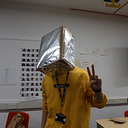11/02/21–25/03/21 (6 weeks)
📃Brief: Design a way to mitigate the effects of loneliness.
🤝Group Members: Damul Yang, Huijie Xiong (Rikkie), Maria Carolina Séves, Sue An, Yiwei Han (David).
👁🗨External Partner: R/GA — Zoha Zoya, Matt Chokshi.
Second in-depth interview
Based on the feedback from the third week, we started to think about how to guide the target group in getting out of their own space, improving negative thoughts and initially exploring new cities and gradually adapt to new environments. Firstly, we re-interviewed the target users to understand their daily routine and the lonely moments in their day and their impact, to see if we could understand them more and identify new design opportunity. I designed an interview sheet to support the interviews and a timeline chart to summarise the interviews.
The interviews did not turn out as we had expected. We found that each person’s moments of loneliness were not quite the same although basically most of them occurred in the afternoons. But we learnt that they all needed to do activities out of the house, such as shopping, going to school, etc. So a potential opportunity was born — could we increase social interaction along their pathways and better integrate them into the urban community.
Another New Idea — AR Geocaching
We have redefined our design goals: Encourage people to go out and establish communication and connection in new environment. Inspired by the AR cases provided by Maria, our group started a new round of ideation, trying to come up with an idea for a mental tutor-like expedition that could be used to create new memories.
We explored each idea carefully and complemented each other’s strengths and weaknesses. In the end, we came up with a final solution: AR Geocaching, an obscure version of hide-and-seek social app embedded in Google Map. The audience can leave their feelings at a location while they are out and about, and people nearby will receive a message and can go to that location to interact.
During the presentation, the students came up with various ideas to improve this new social app variant, such as adding more features like comments, collages, etc. It made me think, “Isn’t this just another redesign of a social app? Is it really very different from Instagram and Facebook? Can this really ease the loneliness of young people? Many uncontrollable factors are likely to harm users (such as malicious comments, and over-reliance on technology). With two more weeks left we decided to re-adjust the design idea.
Reflection
What is a meaningful design? What kind of design is worth doing? I’ve been thinking about this over the past few weeks. When someone is lonely, we shouldn’t design a product to distract them temporarily in a way that only makes them more and more socially inept and inexperienced, which in the long run increases their loneliness; nor should we design a product to simply maintain the lonely person’s social relationships with family and friends, keeping them in a comfort zone for a long time risks great danger.
There is a Chinese proverb that says it is better to teach someone to fish than to give them a fish.
